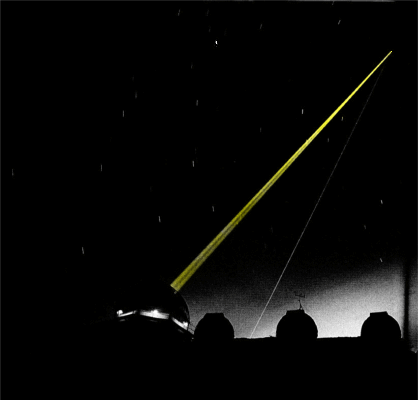
The size of the patch of wave front that can be presumed to be flat changes depending on the seeing conditions. In the daytime with solar heating it can be very small. The focal point of a single patch of wave front will form a star that jiggles continually with the turbulence. Increasing the aperture of the telescope to include many patches of wave front produces a blur of multiple images. Larger telescope apertures enclose more patches of wave front requiring an adaptive correcting mirror with more elements. The collimated light beam striking the correcting mirror is a miniature of the collimated beam that stuck the main telescope mirror. For this reason the optical elements in the correcting mirror are smaller than the original patches of wave front that struck the primary mirror.

In the ionosphere there is a layer of sodium atoms. The sodium atoms come from tiny meteors. The sodium atoms in this layer can be ionized by use of a powerful laser producing a tiny artificial star. The cylinder of ionization in the ionosphere is about a meter in diameter but from the earth the wave front sensor is distant enough from the ionization to see only a star size diffraction pattern. Ref 1
Ref 1 Peninsula Astronomical Society talk by Dr. Clair Max of UCSC, September 13, 2002.